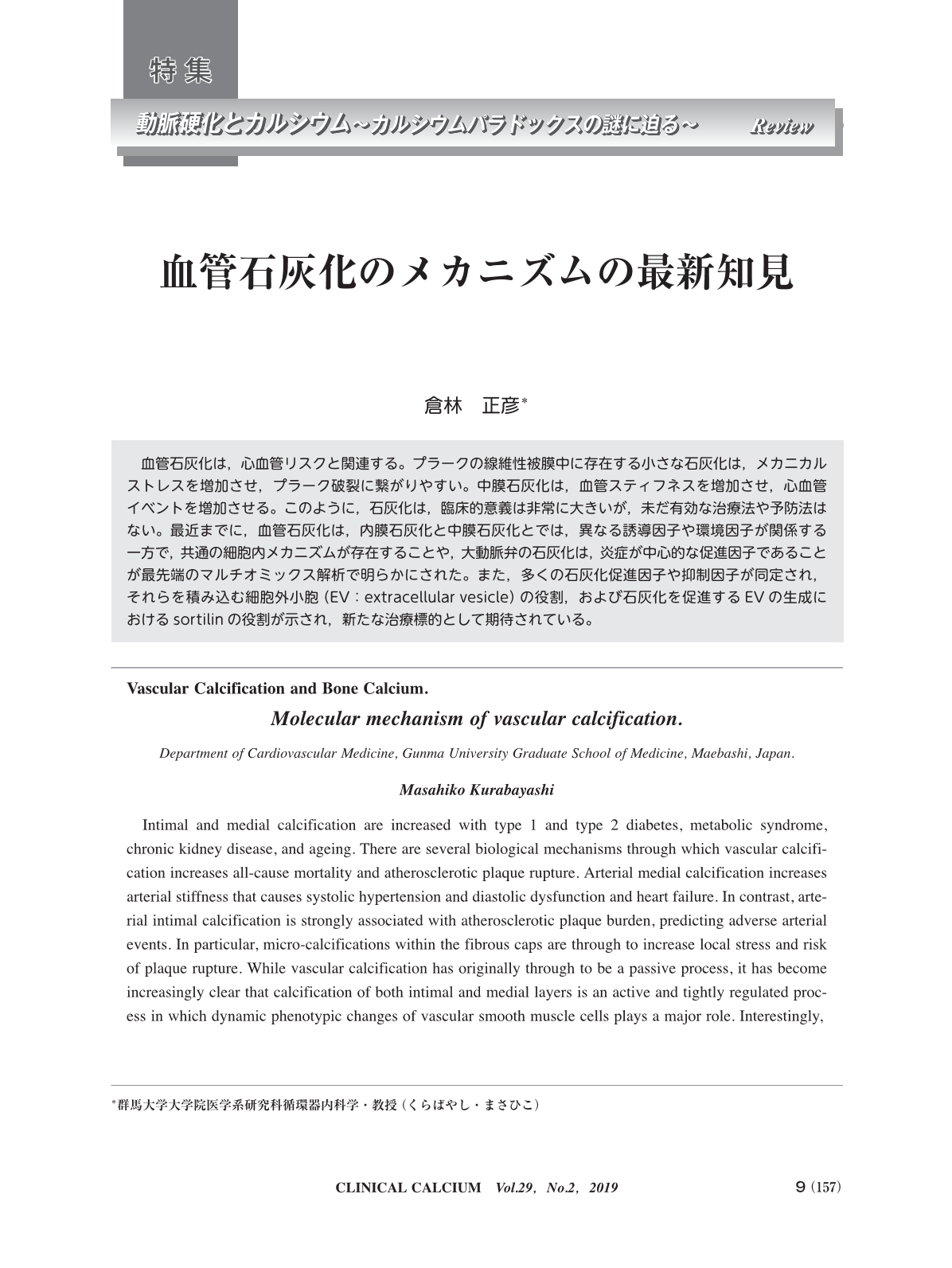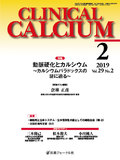Japanese
English
- 有料閲覧
- Abstract 文献概要
- 1ページ目 Look Inside
- 参考文献 Reference
血管石灰化は,心血管リスクと関連する。プラークの線維性被膜中に存在する小さな石灰化は,メカニカルストレスを増加させ,プラーク破裂に繋がりやすい。中膜石灰化は,血管スティフネスを増加させ,心血管イベントを増加させる。このように,石灰化は,臨床的意義は非常に大きいが,未だ有効な治療法や予防法はない。最近までに,血管石灰化は,内膜石灰化と中膜石灰化とでは,異なる誘導因子や環境因子が関係する一方で,共通の細胞内メカニズムが存在することや,大動脈弁の石灰化は,炎症が中心的な促進因子であることが最先端のマルチオミックス解析で明らかにされた。また,多くの石灰化促進因子や抑制因子が同定され,それらを積み込む細胞外小胞(EV:extracellular vesicle)の役割,および石灰化を促進するEVの生成におけるsortilinの役割が示され,新たな治療標的として期待されている。
Intimal and medial calcification are increased with type 1 and type 2 diabetes, metabolic syndrome, chronic kidney disease, and ageing. There are several biological mechanisms through which vascular calcification increases all-cause mortality and atherosclerotic plaque rupture. Arterial medial calcification increases arterial stiffness that causes systolic hypertension and diastolic dysfunction and heart failure. In contrast, arterial intimal calcification is strongly associated with atherosclerotic plaque burden, predicting adverse arterial events. In particular, micro-calcifications within the fibrous caps are through to increase local stress and risk of plaque rupture. While vascular calcification has originally through to be a passive process, it has become increasingly clear that calcification of both intimal and medial layers is an active and tightly regulated process in which dynamic phenotypic changes of vascular smooth muscle cells plays a major role. Interestingly, the driving factors for medial and intimal calcification differ. Whilst uremia and senescence, high serum calcium and phosphate levels drives medial calcification, inflammation and oxidative stress are critical for intimal calcification. Despite the different drivers and environmental cues, the medial and intimal arterial calcification shares common intracellular signaling cascades to promoter cellular reprogramming and phenotypic switching. Recent studies employing new technologies demonstrate that calcifying extracellular vesicles(EVs)that have specific mineralization-promoting cargos such as tissue nonspecific alkaline phosphatase(TNAP), annexins Ⅱ and Ⅵ, are released from vascular smooth muscle, macrophages, and valvular interstitial cells, and serve as calcifying foci. Recent study identified a specific trafficking protein, sortilin, as a key player in the formation of calcifying EVs secreted by vascular smooth muscle cells. Research on aortic valve calcification using spatiotemporal multi-omics identified many secreted and structural matrix proteins not previously implicated in valvular calcification, and revealed that inflammation is likely to be a significant contributor regardless of the layers and stages of the aortic stenosis progression. Increased understanding of the precise molecular mechanisms of phenotypic switching of vascular smooth muscle offers the best chance to identify the potential drug targets for vascular calcification.



